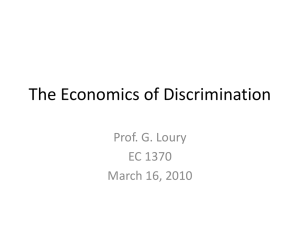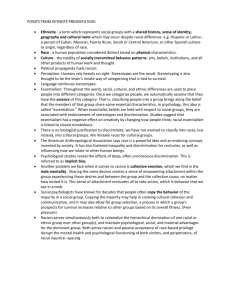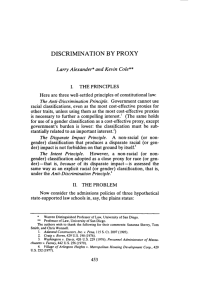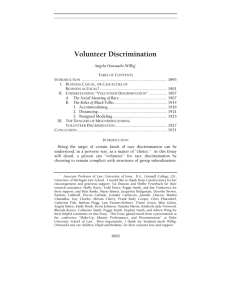CHAPTERl INTRODUCI`ION 1.1.Background of Study Talking about
advertisement
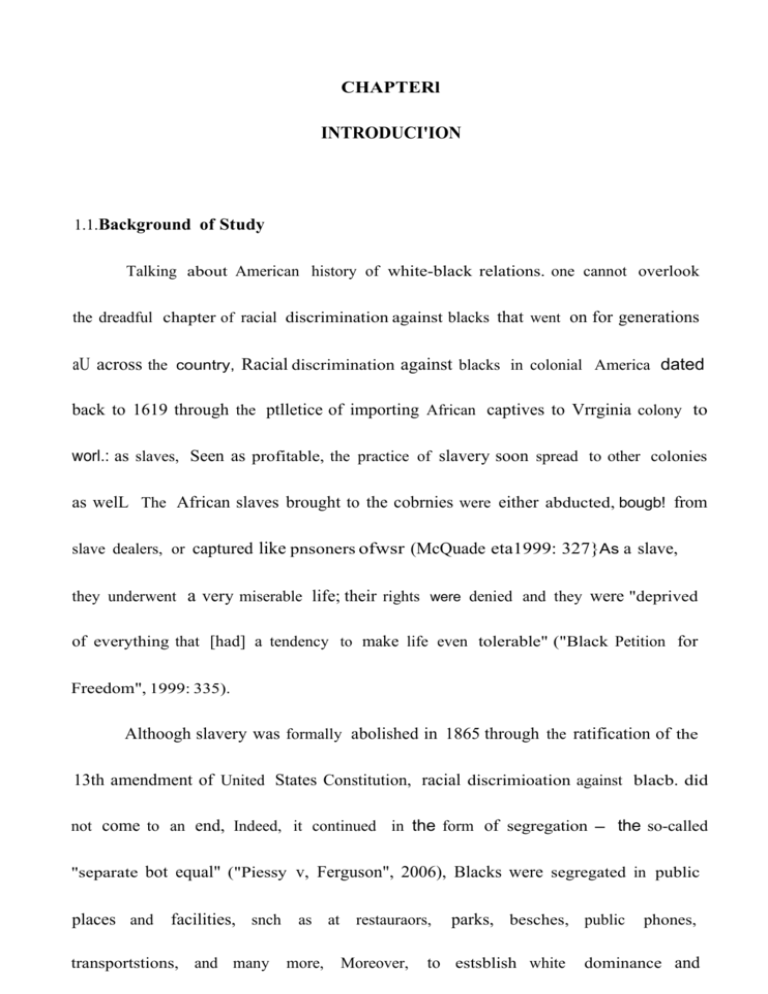
CHAPTERl INTRODUCI'ION 1.1.Background of Study Talking about American history of white-black relations. one cannot overlook the dreadful chapter of racial discrimination against blacks that went on for generations aU across the country, Racial discrimination against blacks in colonial America dated back to 1619 through the ptlletice of importing African captives to Vrrginia colony to worl.: as slaves, Seen as profitable, the practice of slavery soon spread to other colonies as welL The African slaves brought to the cobrnies were either abducted, bougb! from slave dealers, or captured like pnsoners ofwsr (McQuade eta1999: 327}As a slave, they underwent a very miserable life; their rights were denied and they were "deprived of everything that [had] a tendency to make life even tolerable" ("Black Petition for Freedom", 1999: 335). Althoogh slavery was formally abolished in 1865 through the ratification of the 13th amendment of United States Constitution, racial discrimioation against blacb. did not come to an end, Indeed, it continued in the form of segregation - the so-called "separate bot equal" ("Piessy v, Ferguson", 2006), Blacks were segregated in public places and facilities, snch as at restauraors, transportstions, and many more, Moreover, parks, besches, public to estsblish white phones, dominance and 2 The deeply entrenched racial disaimination inevitably brougb!: devastating impacts on the victims' lives. A prominent U.S. civil rights leader, Dr. Martin Luther King, Jr. profoundly expressed in his book Where Do We Go from Here: Chaos or Community (1967) the overwhelming gloom and despondency the! dominated blacks' iives in Am.erlca: Being a Negro in Ameri<ll ,_,., trying to smile when yoo want to ory. It """"' tmng ro bold on to physical life amid psychological death, It meaus the pain of watching yoor children grow up with clouds of interiority in their mental skies. It means having your legs cut off, and then being comiemned for being a cripple (cited in E!l<llrta encyclopedia, 2006). The degrading treatments that blacks went tbtough affected not only their physical world but ai<O their psychological world RJchard Wright, in his 1940 essay, "How 'Bigger' was Born", pointed out that he saw the "undeveloped negative" out of anger and bitterness in blacks' lives (Wright, 1993: 440) Furthermore, quite a few blacks turned violent as the effect of the pressure It is such condition thet Wright attempted to depict in his novel Native Son through the character Bigger Thomas. Accordingly, in this thesis, the writer would like to analyze the impacts of racial discrimination on Bigger Thomas' personality and hehavior Set in the 1930s, Native Son tells a story of Bigger Thomas, a poor, young black man who lives with his family in the slum area of Chicago's South Side. The story depicts Bigger's life and interaction with his family and friends, exploring his feelings, 3 As the stocy progresses, Bisger indulges himself in more crimes against whiles, and is eventually imprisoned and senteRced to death. The writer chose to analyze Wright's Native Son because she finds the novel is unique, in a sense that the main character (Bisger Thomas) is portrayed as a violent and defiant man, with the purpose of showing that the main character is an "American product" of racial discrimination Wright, 1993: 446). Furthermore, Wright presents the character and the stocy so skillfully that she was carried away by the characters' emotions" 1,2, Statement of Problem In this thesis, the writer would like to discuss the impacts of racial discrimination on Bigger Thomas' personality and behavior, inelnding how the mechanisms of Iego, superego, instincLt, anxiety, and e;:o defense work in his conscious and unconsciousness. 1.3.Seope and Umitation The writer will limit her analysis on how the racial discrimination affect Bigger Thomas' personality and behavior in Richard Wright's Native Son. She will analyze the novel by using Freud's Psychoanalytic theocy, focusing on the structure of personality, instincts, anxiety, and ego defense mechanisms. In addition, she also uses data on practices of racial discrimination against blacks between World War I and the Great 4 1.4. Goal and Function The goals of tbls thesis are to find oot the impacts of radal discrimination on Bigger Thomas' personality and behavior and to describe the interplay of id, ega, superego, Instincts, anxiety, and ego defen.<e mechanisms in his conscious and unconsciousness_ The function of this thests is to give readers some insights into practices of racial discrimination against blad<:s in America, especially in the 1930s, and into bow these practices may affect the victim as representnd by tbe cbaracter Bigger Thomas. 1.5.Resean:IJ Mt>thods Tbe writer uses both qualitative and library researeh in analyzing the novel. First, she reads the novel several times to better understand the character Bigger Thomas. Afterwards, she colle<:ts the theories and supporting data needed to support ber analysis. 1n collecting Freud's Psychoanalytic theories, she visits the library of Bina Nusantara University, Atmajaya University, and University of Indonesia. Infunnatioll about the historical background of the novel, especially about the practices of racial discrimination in the United States during that period, is gathered by visiting Information Resource Center (US. Embassy} and Miriam Budiarjo Resootce Center (University of Indonesia). She also browses the internet to lind additional infortlllllion. Then, she conducts the analysis using the theories and data gathered.
